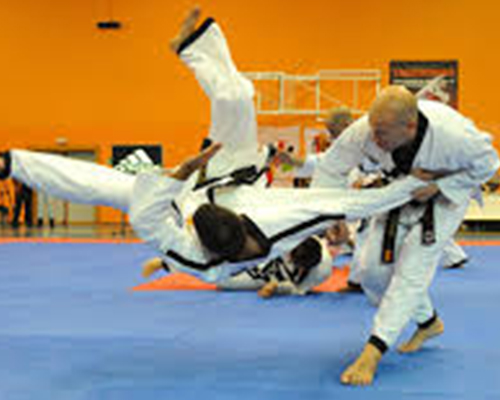Email id
combatgamesindia@hotmail.com
Phone Number
+91-9813313522
+91-8295580148

Hapkido also spelled hap ki do or hapki-do; is a Korean martial art. It is a form
of self-defense that employs joint locks, grappling, and throwing techniques similar to those
of other martial arts, as well as kicks, punches, and other striking attacks. It also teaches
the use of traditional weapons, including knife, sword, rope, ssang juhl bong
(nunchaku), cane (ji pang ee), short stick (dan bong), and middle-length staff, which vary in
emphasis depending on the particular tradition examined.
Hapkido employs both long-range and close-range fighting techniques, utilizing jumping kicks
and percussive hand strikes at longer ranges, and pressure point strikes, joint locks,
and throws at closer fighting distances. Hapkido emphasizes circular motion, redirection of
force, and control of the opponent. Practitioners seek to gain advantage over their opponents
through footwork and body positioning to incorporate the use of leverage, avoiding the use of
brute strength against brute strength.
The art was adapted from Daitō-ryū Aiki-jūjutsu as it was taught by Choi Yong-Sool when he
returned to Korea after World War II after having lived in Japan for 30 years. This system was
later combined by Choi´s disciples with kicking and striking techniques of indigenous and
contemporary arts such as taekkyeon, and Tang Soo Do; as well as various throwing techniques
and ground fighting from Japanese Judo.